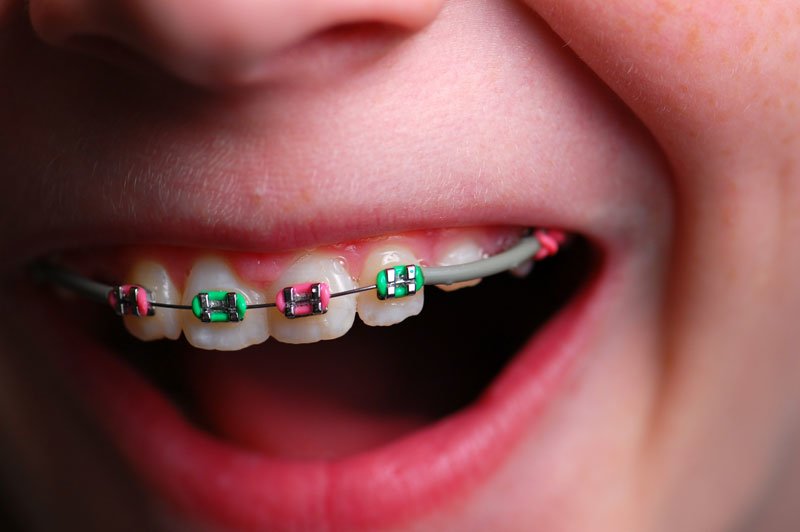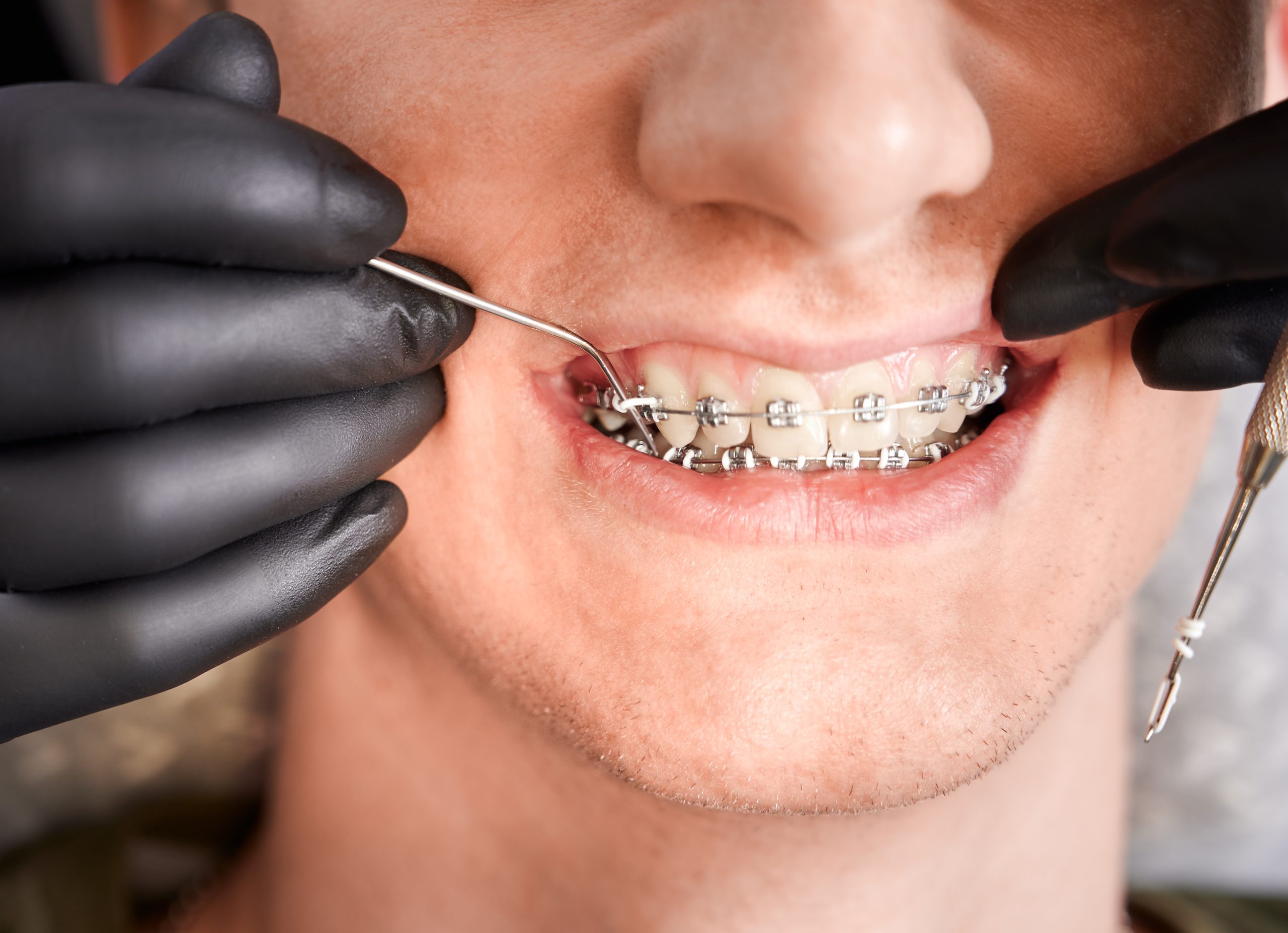A Closer Check Out Different Orthodontics Procedures and Their Benefits in Dental Care
Orthodontic treatments play an important function in boosting oral health and enhancing the general looks of one's smile. From traditional braces to modern clear aligners, the field of orthodontics offers a variety of treatment alternatives tailored to satisfy individual needs.

Standard Dental Braces: Alignment Improvement Technique
Making use of the tried and true approach of conventional dental braces, orthodontic experts successfully correct misalignments of the teeth and jaw to bring back optimum oral health and wellness and function. Conventional dental braces contain metal braces that are abided by the teeth and connected by cords and rubber bands. This system uses gentle pressure to gradually shift the teeth into their correct positions over time.
Among the primary advantages of standard dental braces is their versatility in dealing with various oral concerns, consisting of jampacked teeth, gaps, overbites, crossbites, and underbites. By addressing these misalignments, braces not only enhance the aesthetic look of the smile however additionally boost in general oral health and wellness. Correctly aligned teeth are much easier to cleanse, reducing the danger of tooth cavities, gum illness, and other oral problems.
While modern-day orthodontic improvements provide choices like clear aligners, typical braces stay a cost-effective and reputable solution for complicated positioning concerns. Orthodontists carefully tailor treatment plans to fit each individual's one-of-a-kind requirements, making sure efficient and successful results in attaining a straighter, much healthier smile.
Invisalign: Clear Aligners for Discreet Treatment
While conventional braces have long been a go-to approach for correcting dental imbalances, Invisalign clear aligners provide a discreet choice for achieving straighter teeth and a healthier smile. Invisalign aligners are virtually undetectable, making them a prominent selection for individuals that prefer a more cosmetically pleasing orthodontic treatment option.
These clear aligners are custom-made to fit well over the teeth, slowly moving them into the wanted position. The treatment procedure entails using a collection of aligners that are altered about every 2 weeks to maintain up with the tooth movement.

Additionally, Invisalign aligners normally call for less check outs to the orthodontist for adjustments, supplying an easier treatment alternative for those with busy timetables. In general, Invisalign clear aligners give a discreet, comfy, and effective way to achieve a straighter smile.
Lingual Braces: Hidden Behind the Teeth
Lingual braces, positioned inconspicuously behind the teeth, provide a different orthodontic therapy technique for people looking for a less noticeable way to correct dental imbalances. orthodontics. Unlike conventional braces that are put on the front of the teeth, lingual braces are customized to fit the back surface areas of the teeth, making them almost unseen to others. This element makes linguistic braces particularly attracting individuals that might feel awkward regarding putting on noticeable braces however still desire to accomplish a straighter smile
Among the primary advantages of linguistic braces is their covert nature, allowing patients to undergo orthodontic treatment without drawing interest to their dental realignment procedure. In addition, lingual dental braces appropriate for remedying various oral issues, including congestion, spacing troubles, and bite misalignments. While they may take a while to obtain utilized to because of their positioning, lingual dental braces can properly correct teeth and enhance overall dental health and wellness outcomes. If linguistic dental braces are the right option for attaining wanted dental positioning goals., Consulting with an orthodontist can help figure out.
Ceramic Dental Braces: Visual Option for Placement
These dental braces are crafted from transparent or tooth-colored materials, making them much less conspicuous compared to typical metal braces. By mixing in with the natural color of your teeth, ceramic braces provide an extra refined orthodontic therapy option.
Along with their aesthetic advantages, ceramic dental braces feature similarly to metal dental braces in lining up the teeth and fixing issues such as overcrowding, spaces, and misalignment. They include brackets followed the teeth, connected by cords that carefully direct the teeth into the desired setting over time. While ceramic braces are more breakable than metal braces and may need slightly longer therapy times, numerous patients find the trade-off worthwhile for the better look throughout the orthodontic process. Generally, ceramic braces use a very discreet yet effective means to accomplish a straighter, extra lined up smile.
Retainers: Maintenance of Therapy Results
To keep the outcomes achieved via orthodontic treatment, the usage of retainers is vital. The teeth have a tendency to move back to their original placement when braces are removed. Retainers play a vital function in preventing this relapse by holding the teeth in their new placement. There are different kinds of retainers available, consisting of detachable and set options.

Normal follow-up appointments with the orthodontist are necessary to ensure the retainers fit appropriately and are properly maintaining the outcomes of the orthodontic treatment. By faithfully wearing retainers as recommended, patients can appreciate a lasting, lovely smile and prevent the requirement for additional comprehensive orthodontic work.
Conclusion
Conventional dental braces provide a reliable method for fixing misalignments, while Invisalign supplies a very discreet alternative with clear aligners. Lingual braces are hidden behind the teeth for a much more unnoticeable therapy, and ceramic dental braces supply a visual alternative for placement adjustment.
Unlike standard braces that are positioned on the front of the teeth, linguistic braces are tailored to fit the back surfaces of the teeth, making them virtually unnoticeable to others. These braces are crafted from tooth-colored or clear products, making them much less conspicuous compared to conventional steel braces.In enhancement to their aesthetic advantages, ceramic braces function similarly to steel dental braces in aligning the teeth and dealing with issues such as overcrowding, voids, and imbalance. While ceramic dental braces are extra fragile than steel dental braces and may need a little longer therapy times, lots of individuals find the trade-off rewarding for the better appearance during the orthodontic process. Lingual braces are hidden behind the teeth for a much more inconspicuous treatment, and ceramic dental braces supply an aesthetic alternative for placement improvement.